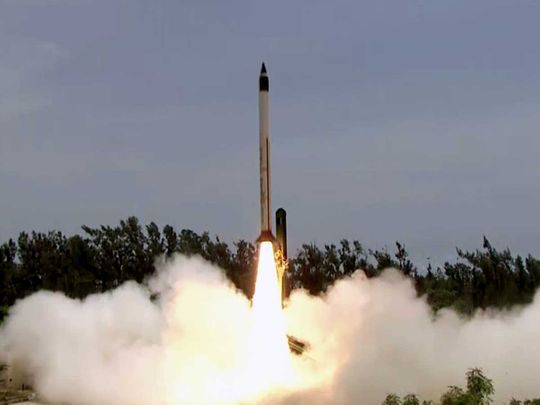
New Delhi: India has successfully flight tested hypersonic technology that will pave the way towards development of missiles travelling at six times the speed of sound.
With this successful demonstration, the country enters an elite club to become a member of the hypersonic regime. This is a step towards manufacture of advanced Hypersonic Vehicles. India became the fourth country after the United States, Russia and China to get this technology.
The Defence Research and Development Organisation (DRDO) successfully demonstrated the Hypersonic air-breathing scramjet technology with the flight test of Hypersonic Technology Demonstration Vehicle (HSTDV) at 11:03 am on Monday from the APJ Abdul Kalam Launch Complex at Wheeler Island, off the coast of Odisha.
Defence Minister Rajnath Singh has appreciated the DRDO for achieving this milestone.
■ They have the speed of a ballistic missile with the manoeuvring capabilities of a cruise missile.
■ Their enhanced manoeuvrability and smooth flight path make them much harder to track than that of traditional missiles.
■ The phenomenal accuracy of hypersonic missiles minimises the risk of collateral damage, pose no risk to aircrews, and are unstoppable.
■ Each hypersonic missile can yield an impact equal to five to ten tonnes of high explosive without a warhead.
■ The missile is also capable of delivering a nuclear bomb, and can reach nearly every coordinate on the surface of the earth within 30 minutes.
“The Hypersonic cruise vehicle was launched using a proven solid rocket motor, which took it to an altitude of 30km, where the aerodynamic heat shields were separated at hypersonic Mach number,” said the DRDO in a statement. The cruise vehicle separated from the launch vehicle and the air intake opened as planned. The hypersonic combustion sustained and the cruise vehicle continued on its desired flight path at a velocity of six times the speed of sound.
Critical functions
Critical functions such as fuel injection and auto ignition of scramjet have demonstrated technological maturity. The scramjet engine performed in a textbook manner.
The parameters of launch and cruise vehicle, including scramjet engine, were monitored by multiple tracking radars, electro-optical systems and Telemetry Stations.
The scramjet engine worked at high dynamic pressure and at very high temperature.
A ship was also deployed in the Bay of Bengal to monitor the performance during the cruise phase of hypersonic vehicle.
All the performance parameters have indicated a resounding success of the mission. With this successful demonstration, many critical technologies such as aerodynamic configuration for Hypersonic manoeuvres, use of scramjet propulsion for ignition and sustained combustion at hypersonic flow, thermo-structural characterisation of high temperature materials and separation mechanism at hypersonic velocities can be achieved.








